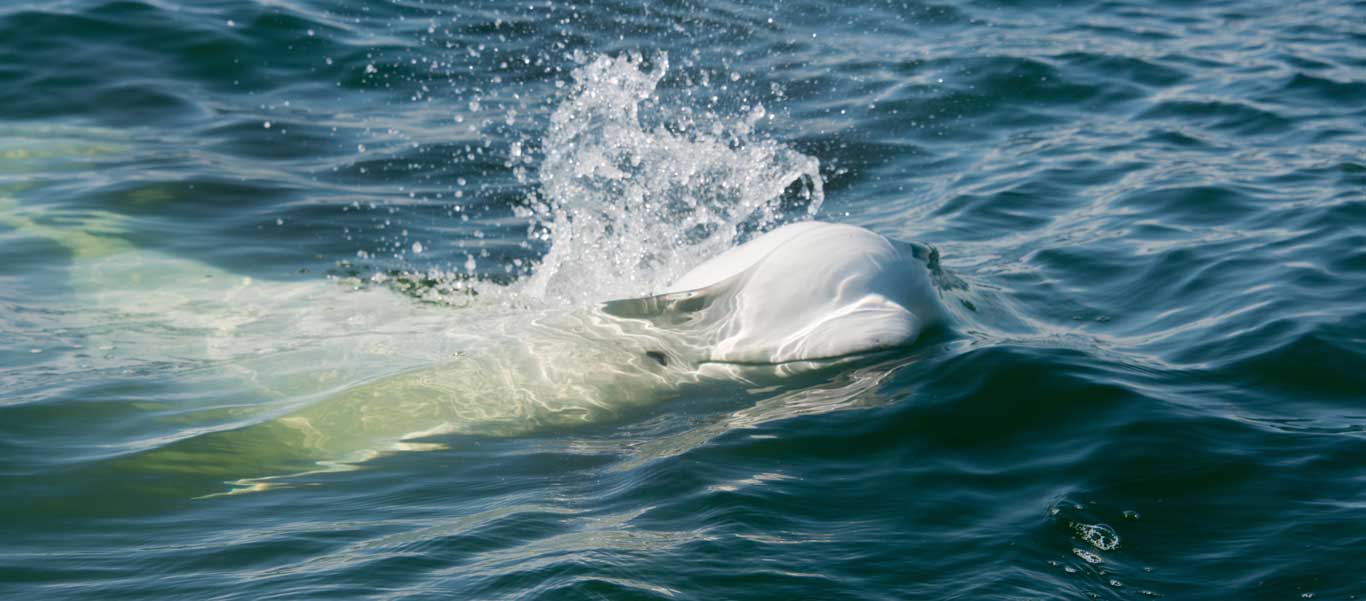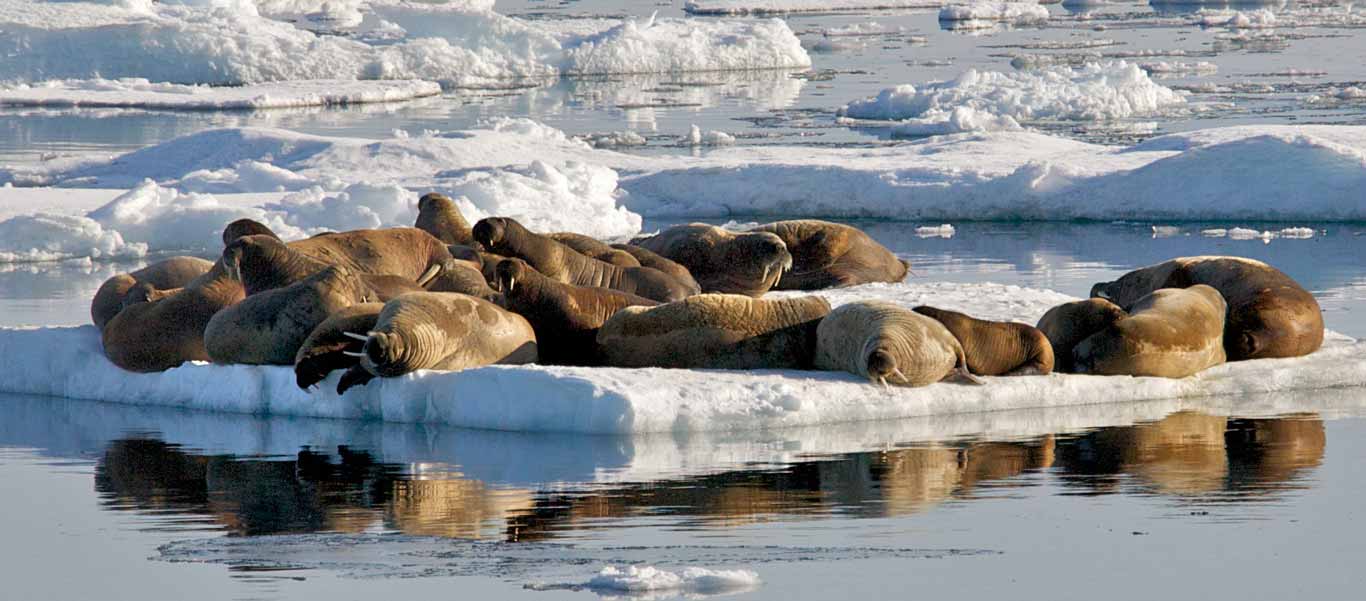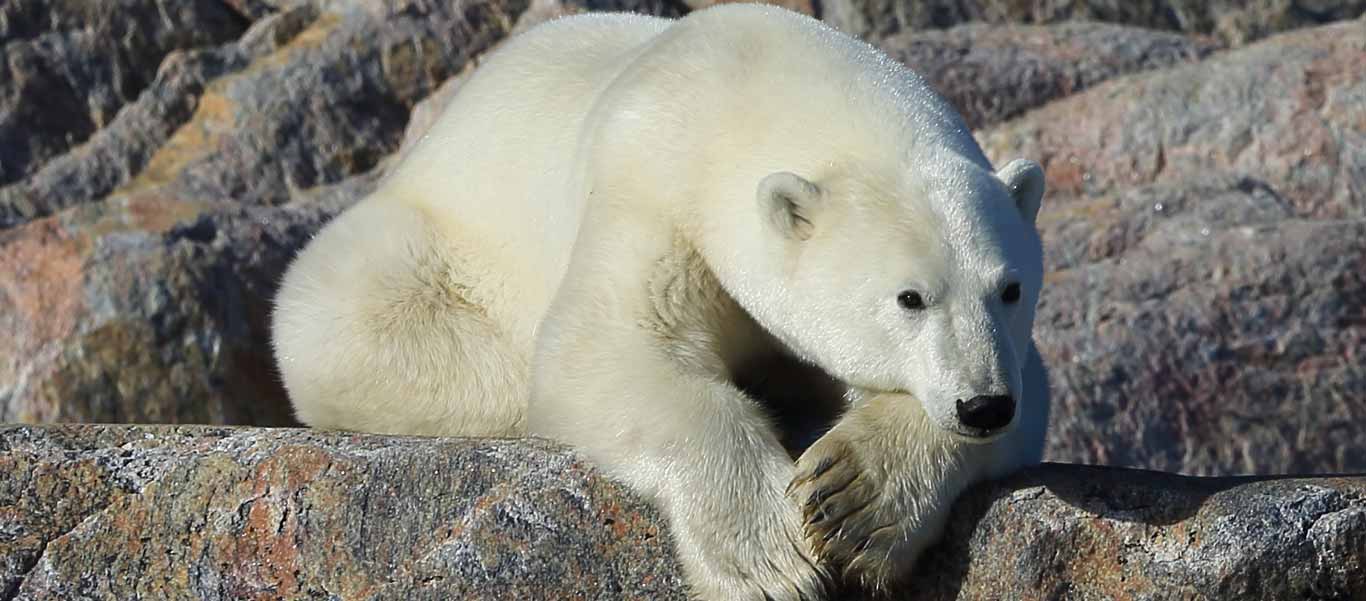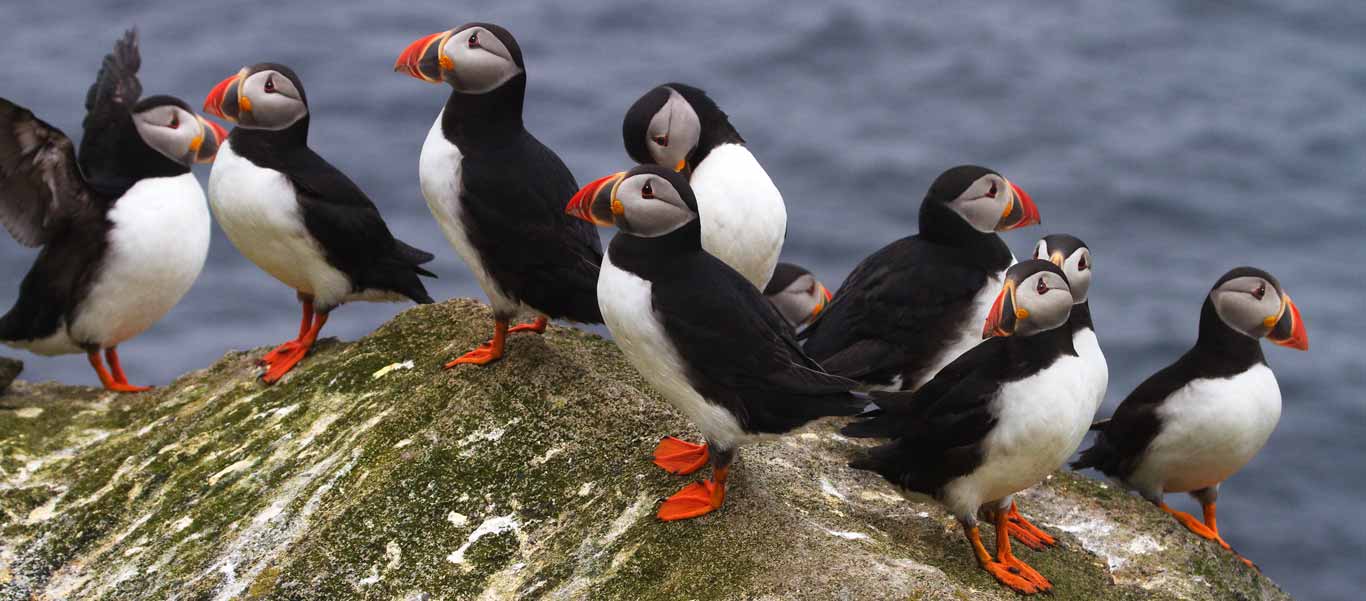Reykjavík to Churchill
onboard Silver Endeavour
July 8 – 26, 2025
Canadian Arctic & Greenland Cruise
We’ve all imagined ourselves in the High Arctic: watching Walrus on nearby ice floes and inquisitive Harp Seals bobbing in the water, the ever-present prospect of a Polar Bear encounter hanging in the icy air. This is a familiar realm, because we are steeped in Arctic legend, from its megafauna, to Erik the Red and John Franklin, to Inuit communities that have thrived on its unforgiving terrain for millennia. Join Apex on this 19-day Canadian Arctic and Greenland cruise. Navigate steep-sided fjords in western Greenland; visit Inuit ruins on isolated Coats Island; search for Beluga Whales in the Churchill River. Spot seals, whales, Polar Bears, and thousands of seabirds. Sail on a state-of-the-art ice-class vessel and soak up the midnight sun during the Arctic’s most energetic season.
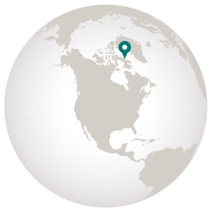
Destinations
- Travel by Air
- Travel by Road
- Travel by Boat
- Travel by Bullet Train
- Travel by Rail
- Travel by Dog Sled
- Day 1
- Day 2
- Day 3
- Day 4
- Day 5
- Day 6
- Day 7
- Day 8
- Day 9
- Day 10
- Day 11
- Day 12
- Day 13
- Day 14
- Day 15
- Day 16
- Day 17
- Day 18
- Day 19
-
Tuesday, July 8: Arrive Reykjavík, Iceland
Arrive in Reykjavík, the world’s most northerly capital, a starkly beautiful patchwork of colorful buildings, creative people, and epic natural beauty. Home to two-thirds of the country’s population, Reykjavík is Iceland’s only real city, a welcoming and walkable place. This evening, meet for a welcome dinner with your fellow travelers and expedition leaders. Overnight at Hilton Nordica.
-
Wednesday, July 9: Reykjavík / Embark Silver Endeavour
Tour the city this morning, including the ultra-modern Perlan Museum with its mirrored dome and high-tech Wonders of Iceland exhibit, offering interactive artificial glaciers, ice caves, and volcanoes. See the immense concrete Hallgrímskirkja, the largest church in Iceland. An elevator ride to the top of the 245-foot tower reveals a staggering view over the city, the bay with its puffin-specked islands, and the surrounding mountains. This afternoon, head to the port to embark the Silver Endeavour, your home away from home for the next 16 nights. Be on deck as the ship heads out of Faxaflói Bay and into the Irminger Sea.
-
Thursday, July 10: At Sea
Spend the day traversing the Denmark Strait, the very same route taken by Erik the Red in the 10th century. Attend lectures about upcoming stops in Southern Greenland and spend time on deck looking for whales and seabirds.
-
Friday, July 11: Prince Christian Sound, Greenland
Connecting the Irminger Sea with the Labrador Sea, this 60-mile-long sound offers all of Greenland’s monumental beauty in miniature. Separating the mainland from a southern archipelago, Prince Christian Sound (or Ikerasassuaq, in Greenlandic) isflanked by sharp peaks. You might as well be in the Viking era as you cruise through the narrow fjord, as the only signs of human life are the weather station where the ship enters, and the tiny village of Aappilattoq, home to 100 intrepid souls. Animal life is more abundant, with Minke, Fin, and Blue Whales seen frequently, as well as Ringed and Bearded Seals. Be sure to be out on deck, as it is a spectacle you don’t want to miss, this magnificent introduction to the land of ice, water, and rock that is the Arctic.
-
Saturday, July 12: Qaqortoq (Julianehåb) / Hvalsey
The largest town in southern Greenland with a population of 3,300, Qaqortoq has been inhabited since prehistoric times. As you approach its harbor, you will see why: Qaqortoq rises steeply over the surrounding fjords, offering panoramic views over the mountains, Lake Tasersuag, and the bay with its aquamarine icebergs. Qaqortoq has evolved into a seaport for fish and shrimp processing, tanning, and fur production. Explore the town on a walk, visiting the churches and museum, and its open-air art exhibition, The Stone & Man Project, which has transformed the town into an outdoor gallery. 12 miles up the Hvalseyjarfjord, Hvalsey is home to the largest Norse archaeological site in Greenland. The “Eastern Settlement” lasted from the 10th- to the 15th-century. Tour the well-preserved ruins of the 13th-century Anglo-Norwegian-style church and farmstead known as Thjodhild’s Stead. The last documented event of the Norse in Greenland was a wedding held in this church in 1408.
-
Sunday, July 13: Paamiut
Paamiut means “the people who live at the mouth” in Greenlandic, a reference to its location at the mouth of the Kuannersooq Fjord. The history of the community dates back to 1500 BC, but it was in the 18th century that Paamiut evolved into a major trading hub within Greenland. Seal fur, whale products, and soapstone carving brought prosperity to the colorful town. Today, Paamiut’s draw is its unspoiled landscape and abundant wildlife. In summer, Minke, Fin, and Humpback Whales can be seen from shore. Rare White-tailed Eagles, called Nattoralik, can be spotted, and are believed to bring good luck. Today, walk through the charming town and visit the small museum to learn about local customs, traditions, and Paamiut’s history.
-
Monday, July 14: Nuuk (Godthab)
Established in 1728, Nuuk (meaning “heartland”) is Greenland’s first town and current capital, housing nearly 30% of the nation’s population. It’s practically cosmopolitan compared to Greenland’s other towns, possessing the country’s only traffic lights, roundabouts, and university. Still, Nuuk exudes great Greenlandic pride and a local charm. Enjoy a walking tour of the town to see Inuit ruins, the home of Nuuk’s missionary founder, Hans Egede, City Hall with its tapestries depicting local history, the cultural house, Katuaq, whose architecture was inspired by the play of the Northern Lights on ice. See the parliament building and the wooden Lutheran Church of our Saviour, whose towering spire provides a noticeable landmark. At the Greenlandic National Museum, learn of their repatriation program to recover thousands of Inuit items taken to Denmark over the centuries. See the famous Qilakitsoq mummies, and an outstanding collection of traditional dresses. You may choose instead to spend the day hiking in the hills above town.
-
Tuesday, July 15: Maniitsoq / Sermilinnguaq
On the central west coast of Greenland stands its sixth-largest town. Maniitsoq is home to fewer than 2,700 inhabitants but is quite well known for its magnificent carvings and beadwork, integral to the national dress of West-Greenlandic women. The town houses a delightful museum and old cemetery. This afternoon, head north to the narrow, steep-sided Sermilinnguaq Fjord, a preferred halibut fishing area. In 2019, the Greenland Environment Fund cleaned up the derelict fishing gear that had accrued along the fjord, and colonies of Razorbills; Brünnich’s, Common, and Black Guillemots; Glaucous Gulls; and Black-legged Kittiwakes rebounded magnificently. 7,400 acres of Sermilinnguaq have now been deemed an Important Bird Area. Explore the narrow waterway by Zodiac, watching birds flit among the impressive sea cliffs.
-
Wednesday, July 16: At Sea
Enjoy the onboard lecture series about upcoming Baffin Island, the largest island in Canada and the fifth largest in the world, as you make the roughly 500-mile trip across Baffin Bay. Baffin has been continuously inhabited by Inuit peoples for centuries and has been the subject of Norse and English exploration since pre-Columbian times. Spend time on deck watching for White-beaked Dolphins, Minke Whales, seals, and Walrus. Birders may spot Pomarine Skuas, Little Auks, Brünnich’s Guillemots, Northern Fulmars, and Glaucous Gulls.
-
Thursday, July 17: Iqaluit, Nunavut, Canada
Canada’s newest capital, located at the head of Frobisher Bay in southeastern Baffin Island, was founded in 1942 as an American air base. Today, Iqaluit is Nunavut’s largest and fastest growing community, and is the political and economic hub of the Canadian Arctic. Walk through town and see the many colorful Inuit murals and carvings displayed along the streets. You may opt for a tour of the Nunatta Sunakkutaangit Museum, housed in a former Hudson Bay Company building, with its incredible collection of Inuit artwork and artifacts, including tools, boats, jewelry, and clothing. If time allows, check out the binders full of old photographs upstairs, which offer insight into early Iqaluit. Head to the Nunavut Legislative Assembly Building, with equally remarkable displays of Inuit art. Others may choose to head out for a hike in nearby Sylvia Grinnell Territorial Park. The picturesque park houses ancient Thule ruins and many varieties of wildlife— Caribou and Arctic Fox are common sightings, along with 40 avian species, including Lapland Longspurs, Northern Wheatears, Red-throated Loons, and Gyrfalcons. Look for the rare Woodsia Fern and Purple Mountain Saxifrage, the official flower of Nunavut.
-
Friday, July 18: Lady Franklin Island / Monumental Island
Early this morning, enter the Davis Strait and embark on a Zodiac exploration of isolated Lady Franklin Island, named for the wife of Sir John Franklin, the 19th-century Arctic explorer who died trying to discover the Northwest Passage. Lady Franklin is home to striking vertical cliffs of ancient Archean rock, likely some of the oldest stone in Canada. With a bit of luck, it’s possible to see Atlantic Puffins and even a rare Sabine’s Gull. Next, head to nearby Monumental Island. Cruise in Zodiacs around its exposed rocky cliffs, an excellent place to spot Black Guillemots, Gyrfalcons and Northern Gannets. Walrus have been known to haul out here. Look for them, and groups of curious Harp Seals, on the many skerries by the island. There is also a chance to spot a Polar Bear along the shoreline.
-
Saturday, July 19: Akpatok Island
Akpatok is the largest island in Ungava Bay, separated from Baffin Island by Hudson Strait, near the northernmost limits of the Labrador Peninsula. It is a beautiful sight with sheer limestone cliffs jutting out of icy waters. This uninhabited island lures huge amounts of wildlife, most notably the world’s largest population of breeding Thick-billed Murres, estimated at well over a million birds. The birds flock to the island’s cliffs between June and September where they incubate their single pear-shaped egg on the cliff ledges. Glaucous Gulls and Peregrine Falcons can be seen soaring above looking for unguarded eggs and chicks. Akpatok Island is also often frequented by Polar Bears and Walrus, with the occasional Caribou sighting also reported.
-
Sunday, July 20: Kimmirut
Kimmirut, formerly named Lake Harbour, is the southernmost community on Baffin Island. Standing on the shores of Hudson Strait, on the aptly-named Meta Incognita Peninsula, Kimmirut has had contact with Europeans since 1000 AD, when Dorset and Norse sailors from Greenland interacted. Contact increased as fur hunters ventured farther north, whalers came to Hudson Strait in search of Bowhead Whales, and Anglican missionaries arrived. In 1911, the first Hudson Bay trading post on Baffin Island was built in Kimmirut. Today, the roughly 400 Kimmirummiutait (Kimmirut residents) preserve a traditional way of life, with a thriving culture of arts and crafts including stone carving, ivory scrimshaw, and jewelry-making using gemstones from the area.
-
Monday, July 21: Kinngait (Cape Dorset), Dorset Island
Kinngait, named Cape Dorset until 2020, is best known as the “Capital of Inuit Art” for its globally renowned native artists. It is a stark and beautiful hamlet on Dorset Island, off the southern shore of Baffin Island. Take a guided walking tour, exploring the town for its best Inuit art. Stop at the Visitors Center for an overview of the community and its history. Visit the Kenojuak Art Centre for a stone-cut print demonstration. See the incredible Cape Dorset Inuit Art Gallery, with its sculptures and carvings.
-
Tuesday, July 22: Coats Island
Situated in northern Hudson Bay, 80-mile-long Coats is one of the largest uninhabited islands in the world. It was home to the Sadlermiut Inuit, but around the turn of the 19th century, contact with western whalers brought disease that virtually wiped them out. Ruins of their homes, in the form of rock circles, are the only evidence of their time here. Coats is peculiar for its lack of Snow Geese and Lemmings. This leaves more vegetation for the birds that are here, including massive colonies of Thick-billed Murres and Glaucous Gulls, which you will see as you cruise the shoreline by Zodiac. You may also see Polar Bears sniffing around the cliffs for Murre nests, as they have been spotted supplementing their diet with birds as the Arctic climate has warmed.
-
Wednesday, July 23: At Sea
Spend the day cruising across Hudson Bay and hearing from the lecture team. Out on deck, look for seabirds, dolphins, seals, and migrating whales.
-
Thursday, July 24: Churchill, Manitoba
Though it may be best known for its Polar Bears, Churchill is home to another wildlife spectacle every summer, when up to 3,000 Beluga Whales gather to feed in the brackish waters of the Churchill River. Choose from several activities today: Take a Zodiac in search of these “canaries of the sea,” so called for their high-pitched squeaks. Then, tour the 18th-century Prince of Wales Fort standing watch at the mouth of the river. You may opt instead to spend the morning kayaking, and with luck, experience life as “one of the pod,” watching the whales carouse beneath you. Alternately, take a guided tour of the Churchill Northern Studies Center and learn about the research happening there. Or, transfer to the site of the wrecked MV Ithaca, a British steamship built in 1922, for a low-tide hike to explore the wreck up close and learn of its history.
-
Friday, July 25: Disembark / Churchill / Montreal
This morning, disembark Silver Endeavour and transfer to the airport for a flight to Montreal. Gather with your fellow travelers and expedition leaders over a farewell dinner. Dinner and overnight at Montreal Airport Marriott In-Terminal Hotel.
-
Saturday, July 26: Montreal / Home
After breakfast, walk to the airport’s departure area to check in for your flights back home.
Details
- July 8 – 26, 2025
- Leaders Kevin Clement, Ingrid Nixon & Dan Olsen
- Rates starting from $27,650 per person Rate details

Reykjavík to Churchill, 2025
onboard Silver EndeavourSuite Categories Per Person Rates Classic Veranda Suite 27,650 Superior Veranda Suite $30,450 Deluxe Veranda Suite $31,850 Premium Veranda Suite $32,750 Silver Suite $43,250 Signature Suite $62,650 Master Suite $71,550 Grand Suite $81,950 Owner's Suite $109,450 Solo – Classic Veranda $41,020 Solo – Superior Veranda $45,220 Solo – Deluxe Veranda $47,320 Solo – Premium Veranda $48,670 - 19 days Trip Length
- 207 guests onboard Silver Endeavour
- Reykjavík Start
- Montreal End
Call us to reserve your spot on this exciting expedition!

